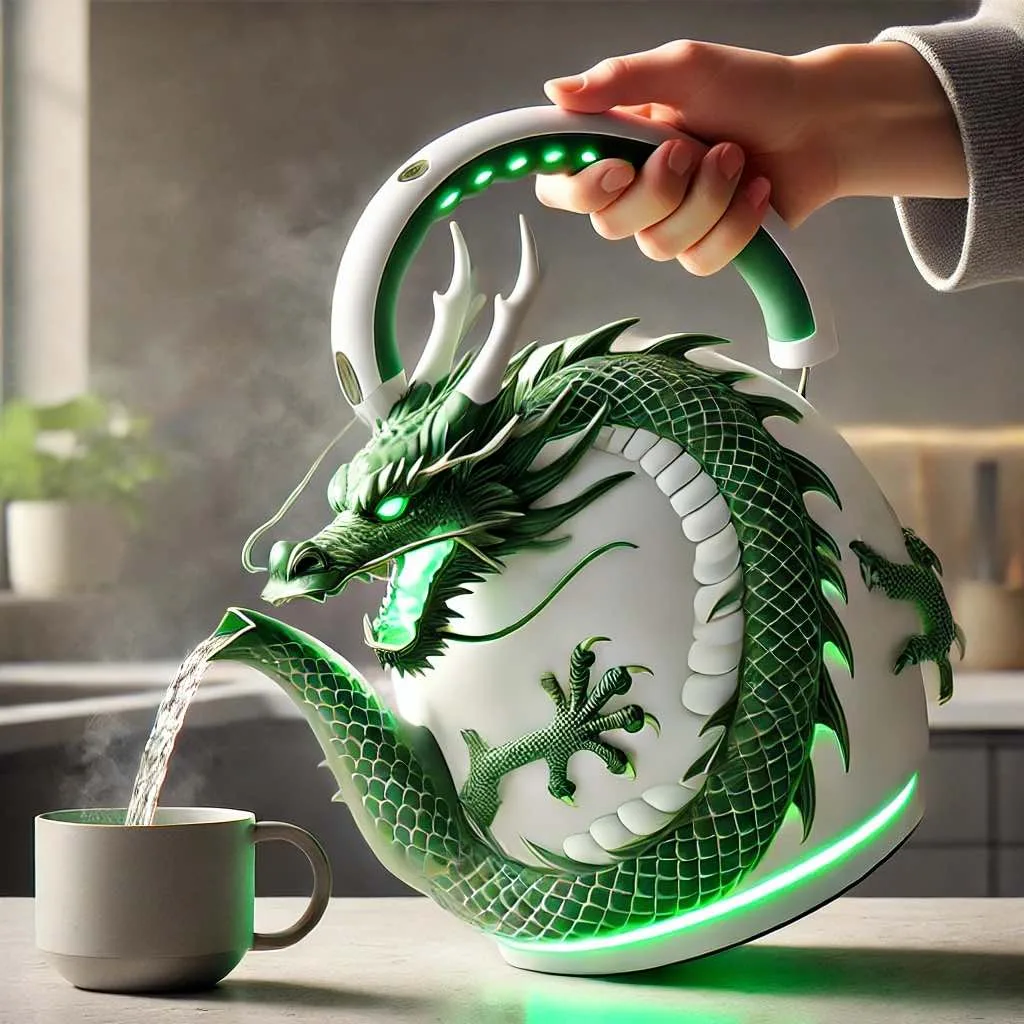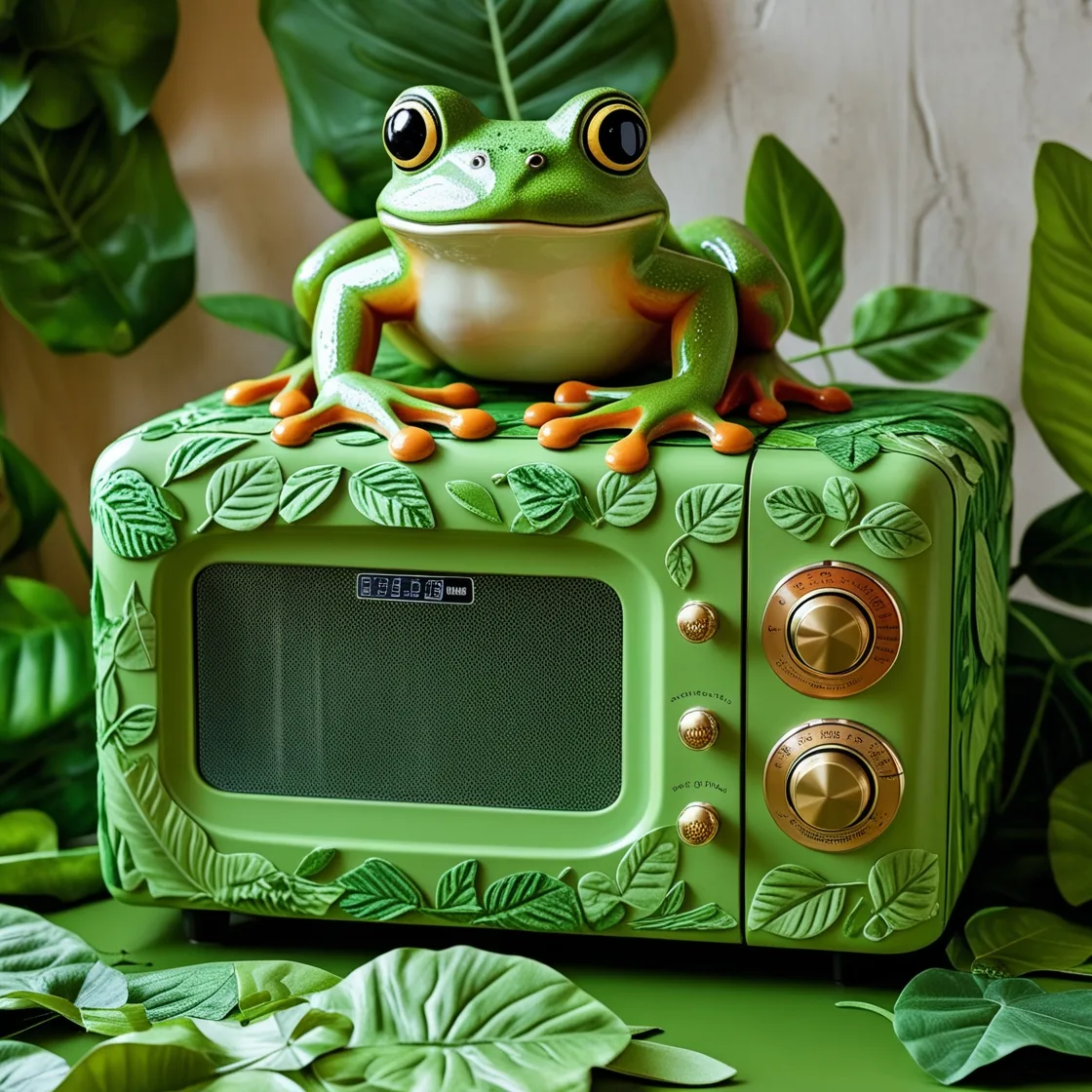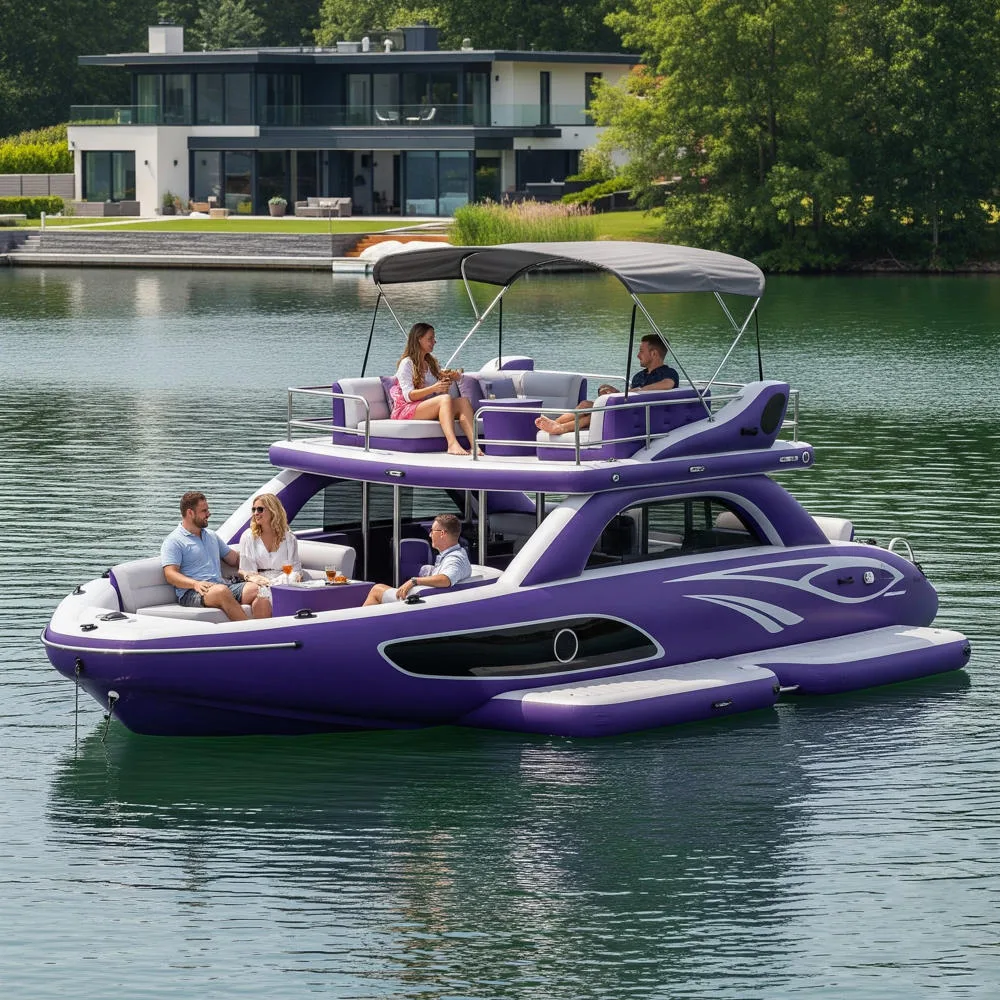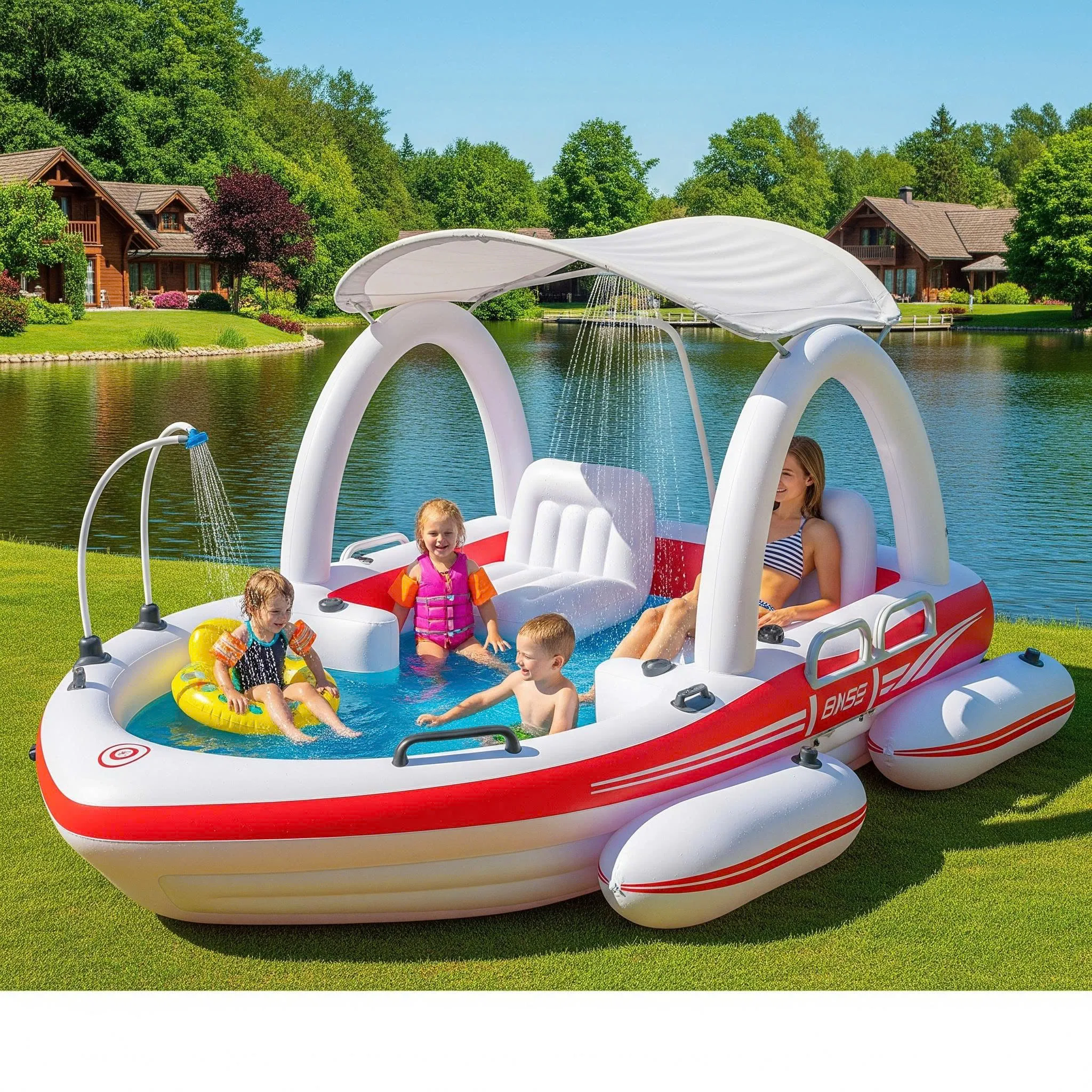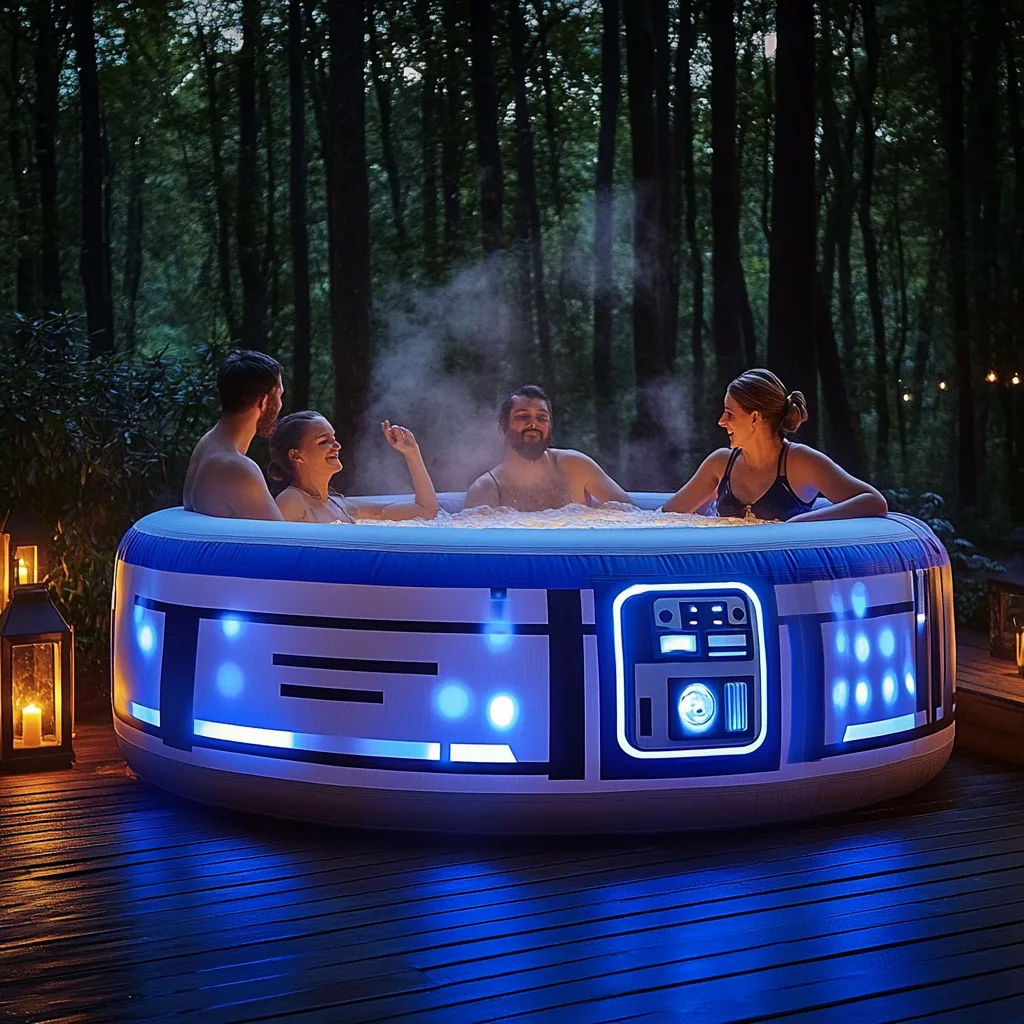In the modern world of interior design, waterfall kitchen islands have emerged as a trend that not only enhances the aesthetics of a kitchen but also provides a highly functional centerpiece. Their sleek and elegant design is characterized by a countertop that cascades seamlessly down both sides of the island, creating a continuous, flowing look. This architectural feature has gained widespread popularity among homeowners, designers, and architects alike due to its ability to merge style with practical use.
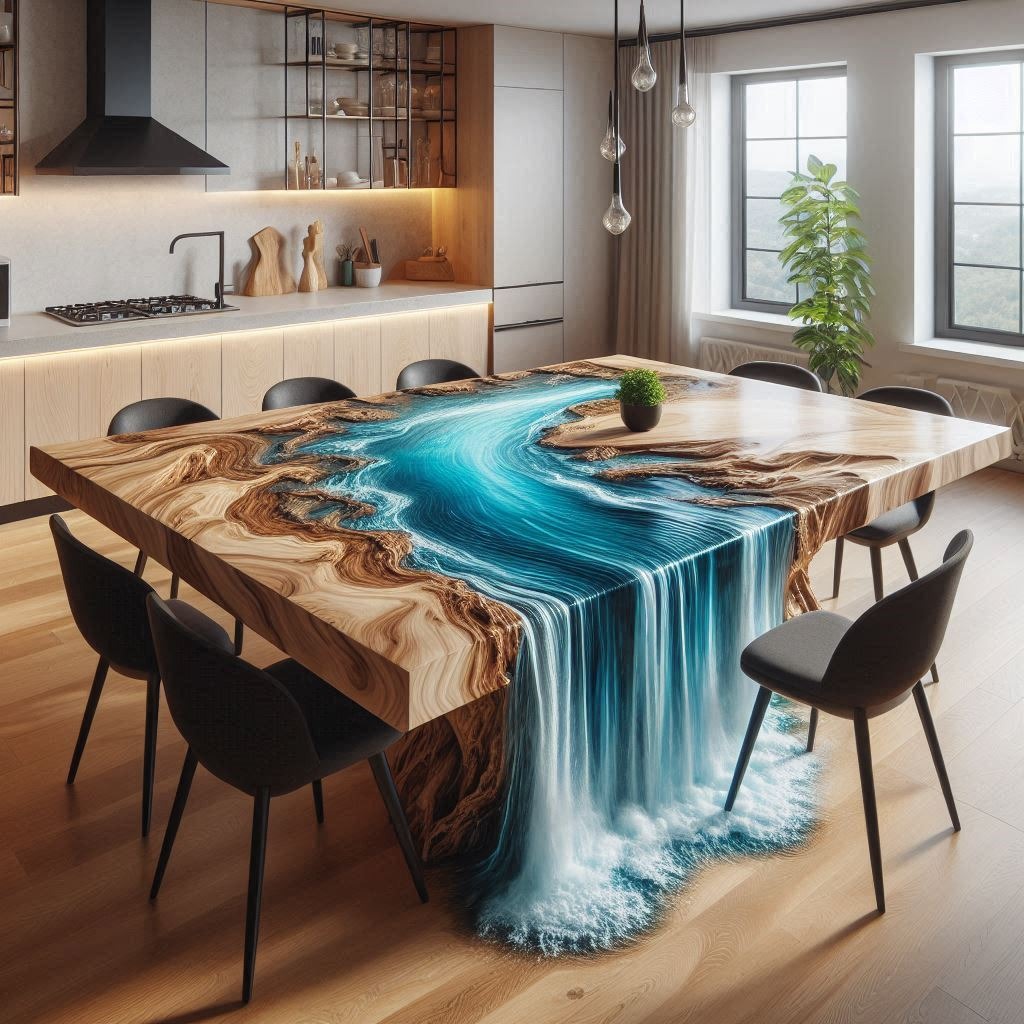
In this article, we’ll delve deep into what makes waterfall kitchen islands so appealing, how they balance beauty with function, and why they may be the perfect addition to your home.
What Are Waterfall Kitchen Islands?
Waterfall kitchen islands are a striking feature in contemporary kitchens. Unlike traditional islands where the countertop stops abruptly at the edges, a waterfall island extends the surface material down the sides to meet the floor. This creates a visually continuous line, resembling a “waterfall” effect. It offers a smooth, uninterrupted flow that transforms the kitchen island into a sculptural piece of furniture rather than just a utilitarian worktop.
These islands often use premium materials such as quartz, marble, granite, or wood, further enhancing the luxurious feel of the kitchen. Their clean lines and minimalist appeal make them a popular choice in modern and open-concept homes, where they serve as both a functional space for cooking and a social hub for entertaining.
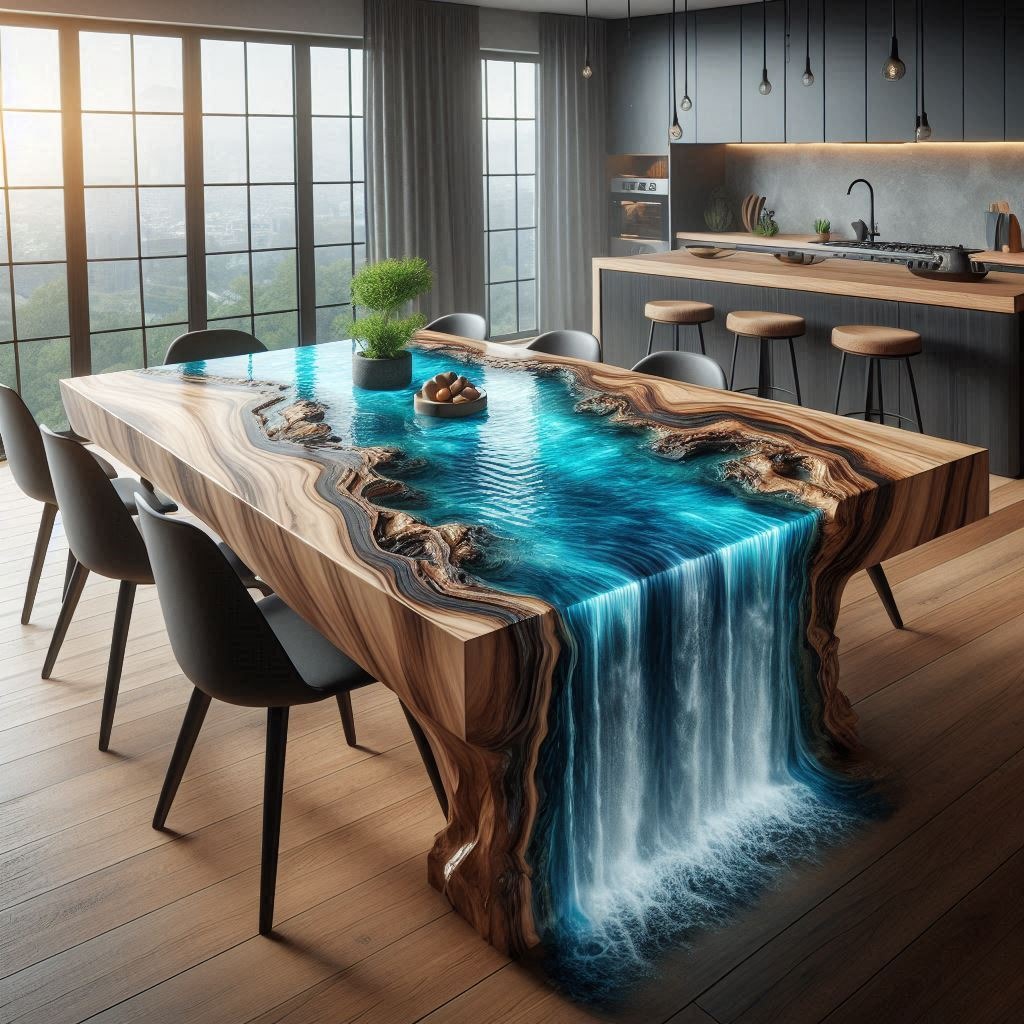
The Rising Popularity of Waterfall Kitchen Islands
Over the last decade, waterfall kitchen islands have soared in popularity as homeowners seek to create spaces that blend form with function. This type of island design has found its way into high-end kitchens, thanks to its versatility and stunning visual impact. It appeals not only for its aesthetic value but also for the way it integrates seamlessly into a kitchen’s workflow, providing additional workspace and storage while acting as a focal point.
In today’s kitchens, where open-plan living and multifunctional spaces are in demand, the waterfall island fits perfectly. It bridges the gap between the kitchen and living area, offering a gathering spot for family and guests while allowing the cook to remain part of the conversation.

1. Aesthetic Appeal: Elevating the Look of Your Kitchen
The first thing anyone notices about a waterfall kitchen island is its striking visual appeal. These islands provide a modern, clean, and sophisticated look that elevates the overall design of the kitchen. The seamless flow of material from the top surface down to the sides creates a continuous and elegant appearance, which contrasts beautifully with traditional kitchen designs that often feel more fragmented.
Clean Lines and Minimalism
Waterfall kitchen islands embody the essence of modern minimalism. Their unbroken lines and smooth surfaces give a kitchen a clean and uncluttered look, making them ideal for contemporary and minimalist design aesthetics. Whether you choose quartz, granite, or marble, the waterfall effect enhances the material’s natural beauty, making the island a work of art in its own right.
The minimalist approach also allows other elements of the kitchen, such as cabinetry, appliances, or lighting, to shine without feeling overpowered. The island acts as a grounding feature, creating balance in the overall design.
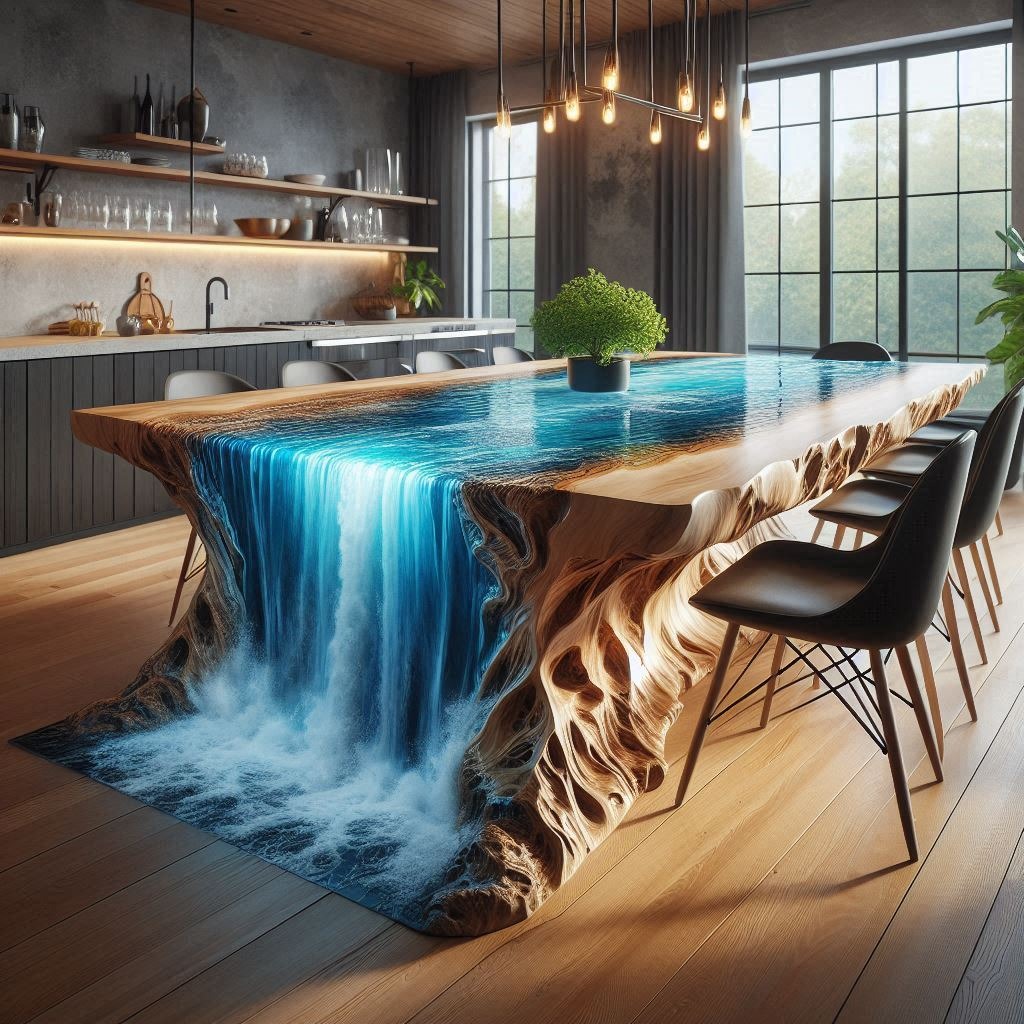
A Focal Point in Open-Plan Spaces
In open-plan homes, where the kitchen flows into the living or dining areas, a waterfall island serves as a striking focal point. It defines the space without creating visual barriers, helping to maintain the openness that is key to these designs. The island draws the eye and becomes a natural gathering place, whether for casual meals, socializing, or even working from home.
The versatility of materials used for the waterfall effect also offers homeowners endless possibilities to match or contrast their existing décor. Whether it’s a sleek black marble island in a monochrome kitchen or a warm wooden waterfall island in a Scandinavian-inspired space, the design options are limitless.
2. Practical Benefits: Merging Style with Functionality
While waterfall kitchen islands are undeniably beautiful, they are also highly practical. The fusion of design and functionality makes them a valuable addition to any kitchen, especially for homeowners who prioritize both form and utility.
Durability and Protection
One of the main practical advantages of a waterfall kitchen island is the protection it offers. By extending the countertop material down the sides, the island’s base is protected from bumps, scrapes, and spills, making it more durable in the long run. This is especially important in high-traffic kitchens where the sides of traditional islands are often prone to wear and tear.
The extended countertop also makes it easier to clean the sides, as the smooth surface allows for quick wipe-downs. Materials like quartz and granite are particularly resistant to stains and damage, making them ideal for waterfall designs.
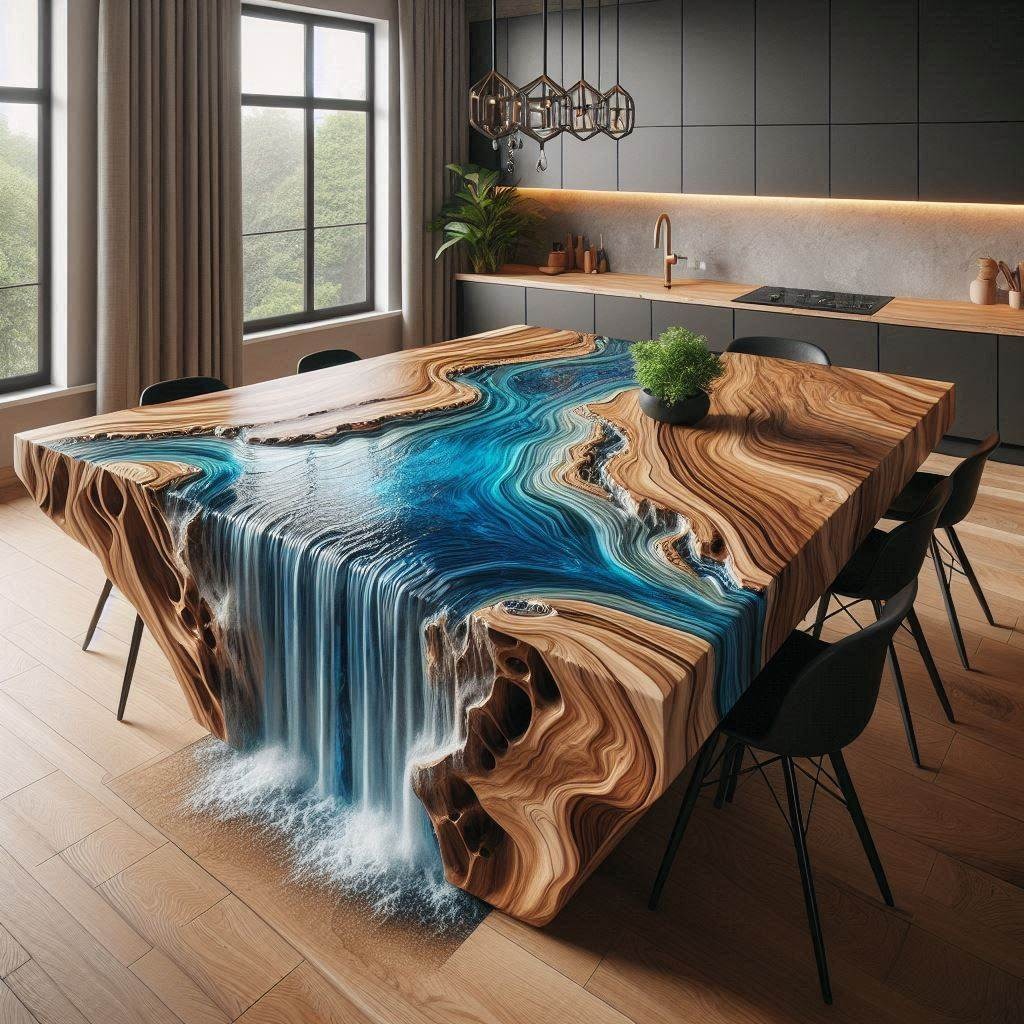
Additional Workspace
A waterfall island can provide significant additional workspace in the kitchen. Whether you’re prepping meals, setting out food for a buffet, or working on a project, the large, continuous surface is perfect for a variety of tasks. The expansive countertop is especially helpful in small kitchens, where every inch of workspace counts.
Because waterfall islands tend to be larger, they can also include extra storage space underneath. Many designs incorporate cabinetry or drawers along the sides or beneath the countertop, maximizing storage options without compromising the island’s sleek look.
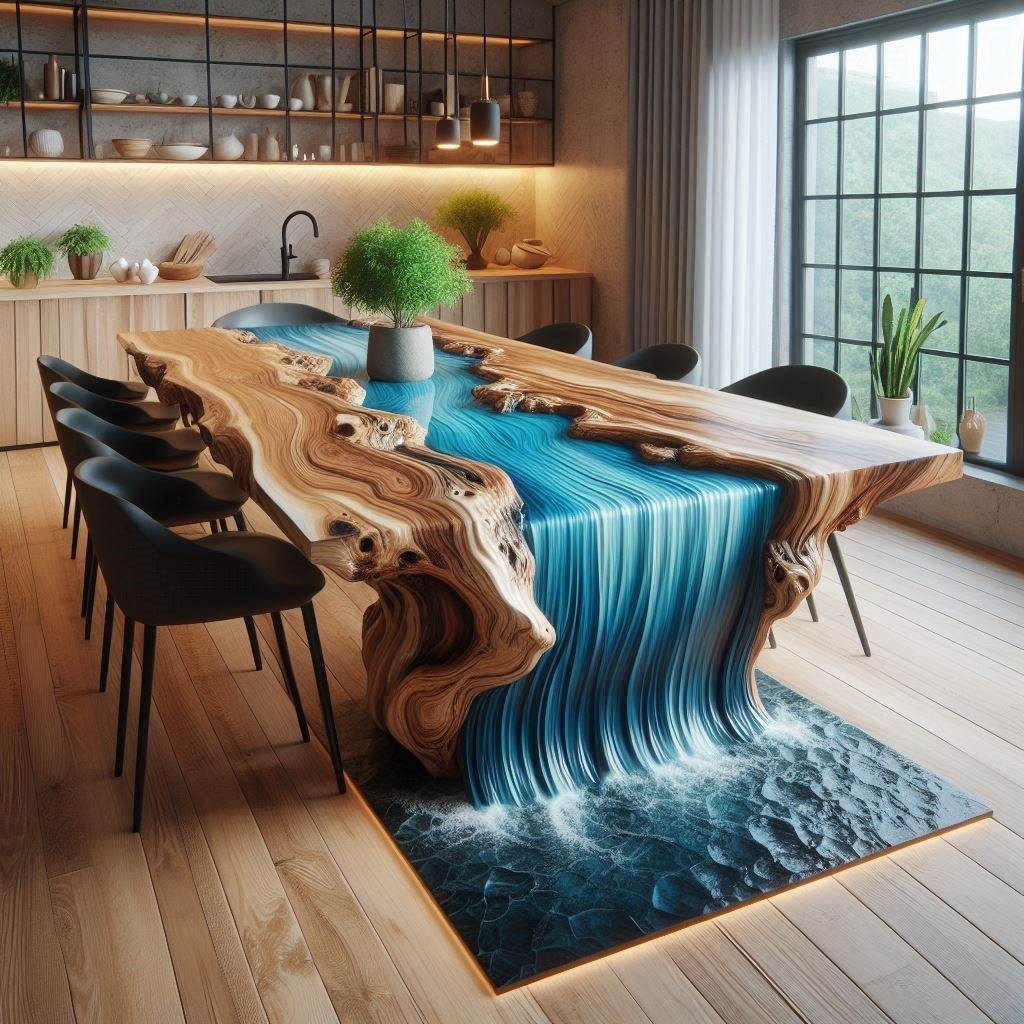
Seating and Socializing
One of the most functional aspects of a waterfall kitchen island is its ability to accommodate seating. The design often allows for an overhang, creating a natural breakfast bar or casual dining area. This feature transforms the island into a multipurpose space where family members can eat, do homework, or chat with the cook while meals are being prepared.
In homes where entertaining is a priority, the island becomes a hub of activity. It serves as a space for serving food, pouring drinks, or simply gathering around to socialize. The combination of beauty and utility makes it an essential feature for homeowners who love to host.
3. Material Choices: Enhancing Beauty and Durability
The choice of material for a waterfall kitchen island plays a crucial role in both its appearance and functionality. Different materials bring out unique characteristics of the design, and each has its advantages depending on the homeowner’s preferences and lifestyle.
Marble: Timeless Elegance
Marble is one of the most luxurious materials available for waterfall kitchen islands. Its natural veining and soft color variations make it a stunning choice for homeowners looking to add a touch of elegance to their kitchen. Marble’s timeless appeal ensures that it will remain a fashionable choice for years to come, but it also requires regular maintenance due to its porous nature.
Quartz: Durability and Versatility
Quartz is another popular choice for waterfall islands, prized for its durability and low maintenance. Unlike natural stone, quartz is engineered, making it more resistant to scratches, stains, and heat. It also offers a wide range of colors and patterns, allowing homeowners to customize their island to suit their design aesthetic.
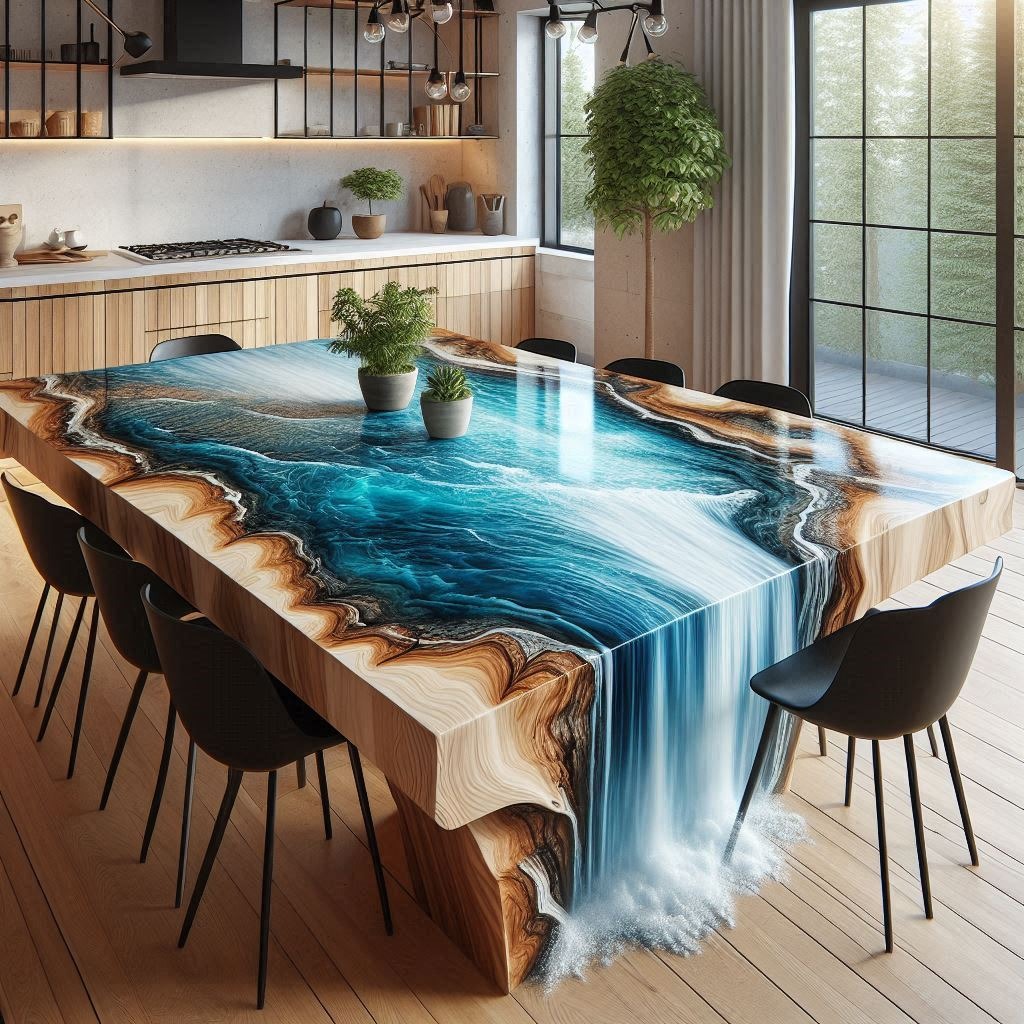
Granite: Natural Beauty
Granite is known for its natural beauty and unique patterns. Each slab of granite is one-of-a-kind, with colors and veining that can vary dramatically. This makes it an excellent choice for homeowners who want their waterfall kitchen island to be a statement piece. Granite is also highly durable and resistant to heat, making it a practical option for those who cook frequently.
Wood: Warmth and Texture
For a more organic feel, wood is a fantastic option for a waterfall island. It brings warmth and texture to the space, softening the sleek lines of a modern kitchen. Wood can be stained or treated to match a variety of color schemes, from light Scandinavian woods to rich, dark walnut. While wood requires more maintenance than stone, it can be refinished over time to keep it looking fresh.
4. Installation Considerations: What to Keep in Mind
While waterfall kitchen islands are a beautiful and functional addition to any kitchen, there are a few key considerations to keep in mind when planning for one.
Cost and Investment
Waterfall kitchen islands can be more expensive than traditional islands due to the additional material and craftsmanship required to create the cascading effect. The cost will depend on the material chosen and the size of the island, but it’s important to factor in this investment when budgeting for a kitchen renovation. However, the long-term value and visual impact they add to the home often justify the cost.
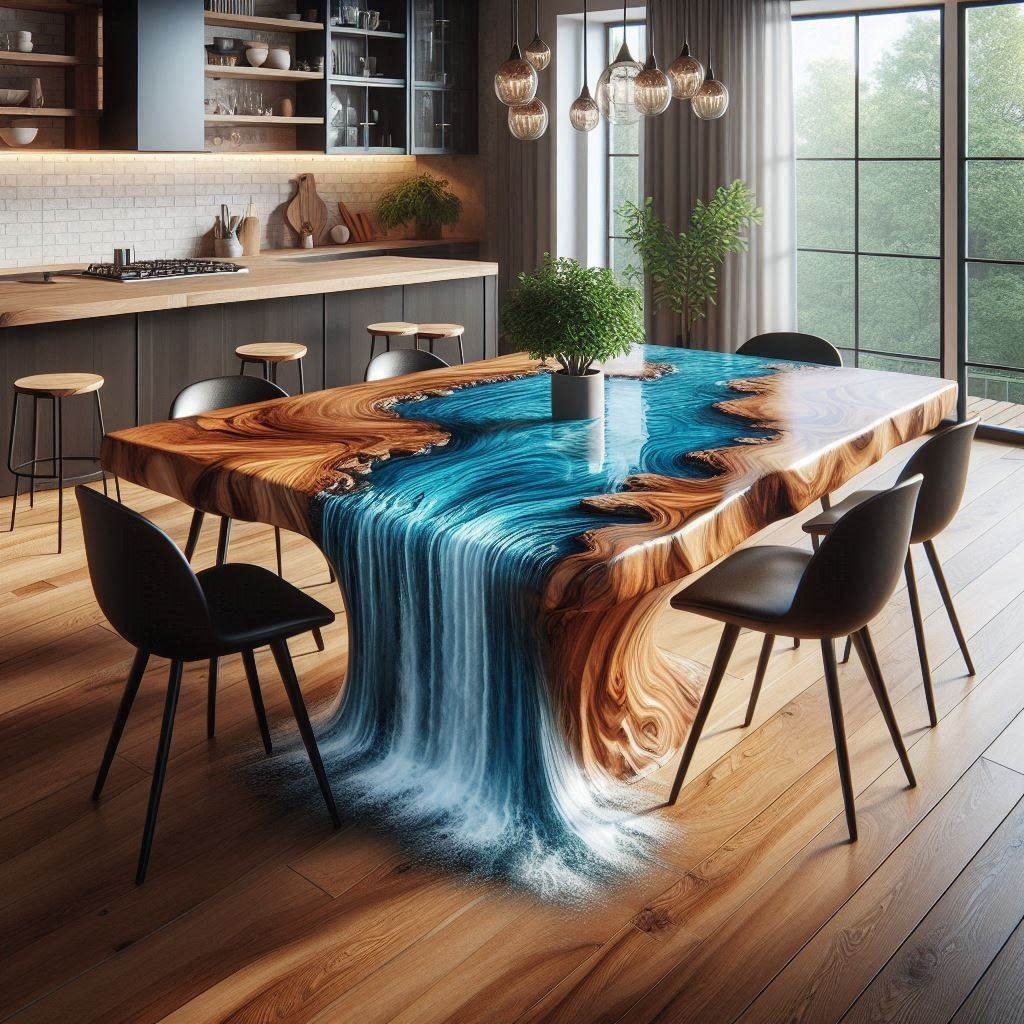
Space Requirements
Because waterfall islands are typically larger than traditional islands, it’s essential to ensure you have enough space in your kitchen to accommodate one. They work best in open-plan layouts where they can act as a centerpiece without making the kitchen feel cramped. Be sure to consult with a professional designer or contractor to determine the ideal size and placement for your island.
Skilled Craftsmanship
Creating a waterfall effect requires precision and expertise, as the material must be carefully cut and mitered to create seamless edges. Be sure to hire a skilled contractor with experience in waterfall island installations to ensure a flawless result. Poor craftsmanship can lead to visible seams or uneven edges, which detracts from the sleek, modern look of the island.
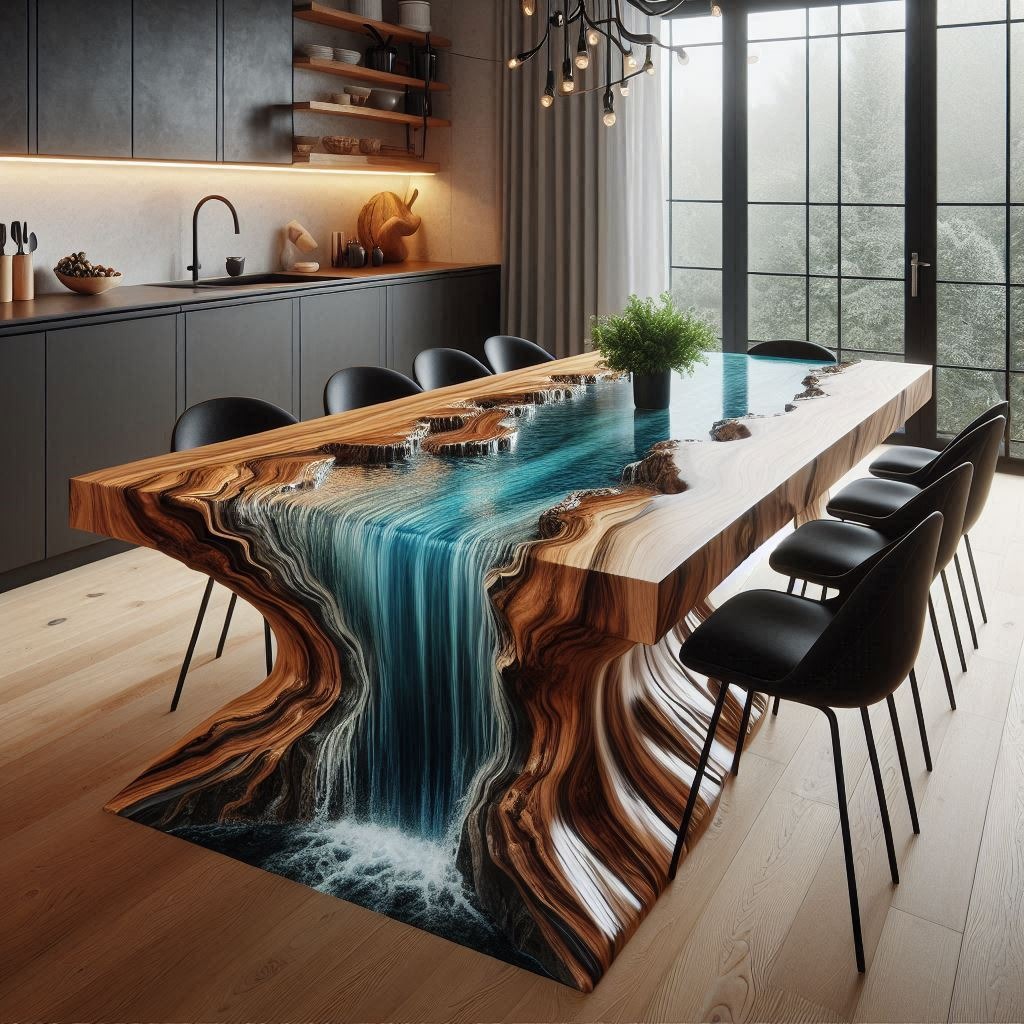
Waterfall kitchen islands represent the perfect fusion of design and practicality, combining modern aesthetics with everyday functionality. Their clean lines, continuous flow of material, and versatility make them a standout feature in contemporary kitchens, while their practical benefits—durability, additional workspace, and seating options—make them highly functional for today’s busy lifestyles.
Whether you’re renovating your kitchen or building a new home, a waterfall kitchen island is an investment in both style and utility. It enhances the overall look of your kitchen while providing a multipurpose space for cooking, entertaining, and socializing. With the right materials and skilled craftsmanship, a waterfall kitchen island can be the showpiece of your home, offering a balance of beauty and practicality that will be enjoyed for years to come.


